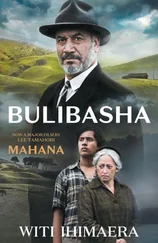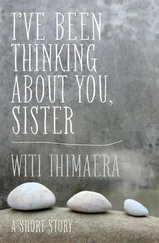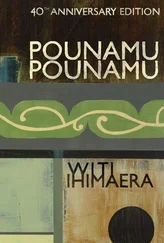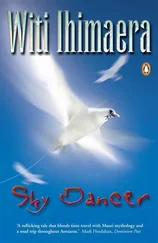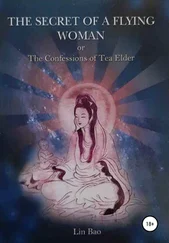Parihaka was in its path.
It was during this same time, while incarcerated at Mount Cook, that Horitana was woken in the middle of the night by sounds of consternation and alarm.
‘What is happening?’ he shouted.
He saw guards turning up the gaslights and, carrying lanterns, moving swiftly from cell to cell, rousing the prisoners and shackling them together. ‘We’re to be shipped to the South Island,’ Paora cried to him, ‘either to Hokitika, Dunedin or Christchurch.’
Suddenly, Horitana’s own cell door was opened and a visitor was admitted, a distinguished fair-haired gentleman. Horitana leapt at Piharo but his chains held him back. ‘You have finally come to kill me?’ he asked.
‘Oh no,’ Piharo said, ‘that would be altogether too easy a punishment. Here,’ he continued, ‘I have brought you a gift.’
In his hands he held an object that Horitana at first could not recognise: it possessed a terrible beauty. Then he realised that it was a mokomokai, a tattooed head, plated with silver. It flashed in the light and Horitana put his hands to his eyes to prevent being blinded.
The silversmith who had fashioned the mokomokai must have been a craftsman of the highest order. He had duplicated the mummified face beneath, finely layering it and etching it with the filigree of the original moko. There were no eye apertures and only an open gash for the mouth.
There was a sinister refinement. The skull of the mokomokai had been entirely hollowed and scraped out. It had been hinged so that it could be worn. Once the wearer’s face was enclosed, it would be padlocked tight.
‘You cannot do this inhuman thing,’ Horitana said.
Piharo’s revenge had twisted into something beyond human pity. He called five guards into the cell to restrain Horitana.
‘No. No ,’ Horitana cried as the guards pinned him down.
And Piharo wrapped his whip around Horitana’s neck and forced him so close they could have kissed. ‘I vowed you would pay for what you did to me,’ he said. ‘You not only touched me, you marked me forever.’ His words hissed out. ‘You inflicted me against my will with your moko. Now, against yours, wear mine.’
The mokomokai was surprisingly heavy. The silversmith had been required to reinforce the skull with an iron plate. As it was fitted onto his face Horitana groaned at the weight; the bottom edge of the mokomokai cut into his shoulders so that they bled.
And when it was padlocked into place, immediately the temperature inside the mokomokai increased so that Horitana’s face streamed with sweat. How will I be able to live in this eternal darkness? As fear overtook him, his heart accelerated, racing out of control. He began to gasp for air, pressing his lips against the mouth aperture.
Lesser men would have died from terror within an hour or two. Somehow, Horitana managed to calm himself. ‘Oh, valiant heart,’ he cried, ‘practise the art of forbearance.’
‘Still alive, are we?’ Piharo was disappointed at first, hoping for a quick harvest. Then he smiled with joy. ‘All right, live as long as you wish. I will have you imprisoned until you die and then you will be mine. You will never see your wife again.’
From that moment, Horitana disappeared off the face of the earth.
And now the question:
Why, in all the prison records of the time, was there no mention of the mokomokai? You’d think, if it were true, that we would all have heard of a dead man’s face being used to cover that of a living man? Perhaps Piharo’s silver didn’t just cover the mokomokai but also the palms of a few warders to ensure their tongues remained silent.
Another question:
Where did the inspiration come from? Well, I have earlier mentioned some of the authors in Piharo’s library. One of those was Alexandre Dumas père , and it is most likely from L’Homme au Masque de Fer (begun in 1847), the final part of his Three Musketeers trilogy, that Piharo got the idea — or stole it. Other romans of the time relating to torture and cruel imprisonment include Edgar Allan Poe’s The Premature Burial and Dumas père’s Le Comte de Monte-Cristo (both published in 1844) and Victor Hugo’s Les Misérables (1862).
Whatever the influence, the rumour grew among Maori prisoners of the man who lived within the face of another, dead warrior. Just to look upon that face, which sometimes flashed blindingly in the light, was to bring you to your knees in awe at the abhorrent nature of the punishment — and at the prisoner’s great agony.
They called him the man with the face of silver.
Te tangata mokomokai.
CHAPTER ELEVEN
Saga of the Fences
Meanwhile, at Parihaka, the extraordinary saga of the fences began.
Picture this: the year is 1880 and villagers are working in the gardens of their expansive plantations north-west of the kainga. There is no school today and, early in the morning, Erenora has gone to the complex of barns and high-timbered paddocks where the bullock herds are kept. As soon as they see her, they crowd around her. ‘No, no!’ she laughs as they press in and nuzzle her. ‘I only need two of you!’
She yokes the lucky bullocks to a sled and is soon off to the stream to fill barrels of water for the cultivations. As she passes through the village, some of the tataraki’i jump impulsively onto the sled. ‘Can we come with you?’ they ask. When Erenora reaches the stream the children happily help her fill the barrels; sometimes they playfully splash each other.
Further upstream, a group of kuia is harvesting watercress. They stand in the stream, their dresses stained dark with the water, gossiping as they pluck the cress from the banks.
June is an important month in the Maori calendar. The heliacal rising of the Pleiades star cluster ushers in Puanga, the Maori New Year. Falling at the end of the harvest, it is the time to prepare the land and plant the new crops.
The cultivations are all neatly divided by sod walls and manuka picket fences. They stretch from the citadel to the outer perimeter near the sea; there are also small shelters and huts between. The walls and fences are there not only to protect the crops from the village’s bullocks, horses and pigs but also to contain and define the plantings: melon, potato, pumpkin, maize and other vegetables, oats for horse feed and, also, tobacco. The gardens are tilled on a rotational basis, so every now and then there is an empty plantation, fallow the current year but to be planted next year. Pigs are fenced in. Domestic fowls roam wherever they wish. Small lanes allow the workers to move between the gardens.
An idyllic scene, you think? Not so. Bryce’s roadbuilders are making relentless progress towards the plantations.
‘I was driving my bullock team, taking the water to the gardens, when all of a sudden the children, who had been skipping beside the sled, pointed ahead, “Titiro! Look!”
‘The road Mr Bryce’s labourers were building had reached the outer perimeter of the gardens. How could you not notice it! The roadbuilders were loud and boisterous, and so was the Armed Constabulary protecting them.
‘I saw an altercation taking place between the trespassers and some of our villagers. “Get out of the way,” two of the constables were demanding. The labourers had broken two of our picket fences around fields where we were storing crops and preparing the land for the coming year. The invaders pushed one of the villagers and, with a cry, she fell to the ground. Then the labourers and constabulary pushed right through the fence onto our side. Quickly, I lashed at the bullock team, “’aere! W’ano!”
Читать дальше


